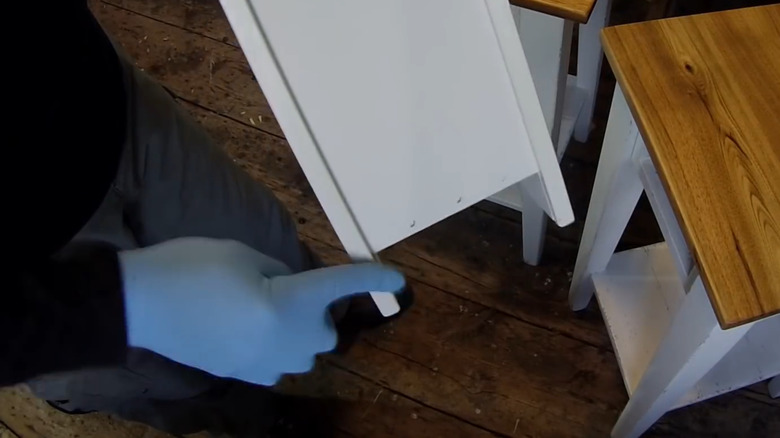Why Your Friction Fit Drawers Aren't Closing Properly
We may receive a commission on purchases made from links.
You won't be surprised to learn that friction-fit drawers sometimes stick because of, well, friction. That's not meant to be sardonic; the real question, of course, is why they stick today but not yesterday. There are a few likely reasons, any combination of which can cause drawers to be uncooperative: poor fit, humidity, and even your failure to clean something invisible. There's not much you can do about the fit and humidity, short of sanding, hand-planing, or rebuilding the drawer and spending thousands on a humidity-control system to make your $100 nightstand work better. You can clean the drawer and runners, but as we'll see, it probably won't completely solve the problem. What's missing is lubrication.
Lubricating wood-on-wood friction-fit drawers isn't necessarily as simple as it seems. Mitchell Rudman of High Falls Furniture (@hffcom on YouTube), a Vermont furniture maker, has a drawer lubrication method that completely solves the puzzle. But when you first see that he lubricates drawers with bowling alley wax, Vaseline, and sometimes Neosporin, it might seem a bit quirky. It's not. In fact, for reasons we'll get into, his choices are probably wiser than everyday tip-and-trick-style conventional wisdom, which would have you rubbing candles all over the place.
Why do friction-fit drawers stick in the first place?
For almost any wood product, such changes can often be chalked up to wood swelling with humidity. Rudman's drawers are painted, so that probably reduces the infiltration of moisture a bit. But drawer slides can also become worn or accumulate debris (chipped paint, for example). And given the tight tolerances to which Rudman builds his drawers, it doesn't take a lot of swelling, debris, or wear to cause drawers to stick a bit.
The severity of the problem will be evident to you. Is the drawer painful or impossible to open and close? However, the cause might be trickier to diagnose. Your best bet is to remove and inspect the drawer for signs of excess friction. This will tell you where the problem is, help you pinpoint the cause, and let you know where lubrication might be useful. And materials like wood that you lubricate are, of course, more likely to pick up whatever will stick and hold it exactly where it will get in the way of your drawer's opening and closing properly.
If some part of a drawer or slide is actually deformed (for example, if a heavy payload has caused a drawer bottom to sag or a loose runner has twisted over time — a problem you don't see with now-common metal drawer runners), you can consider that broken. You might get some temporary relief by lubricating broken parts, but in the end, you'll need actually to fix the problem itself.
But Neosporin as a drawer lubricant?
Out of context, lubricating furniture with a topical antibiotic sounds a little silly. Conventional paste wax is a more common choice, but the ingredients are substantially the same as Dorzu Bowling Alley Wax: carnauba, turpentine, fine waxes, and mineral spirits. The thing about freshly applied paste wax, and apparently bowling alley wax, is that it can be a bit sticky when first used. So Rudman takes the unusual but entirely reasonable additional step of actually lubricating the wax itself with semi-solid petroleum jelly. Petroleum jelly brands like Vaseline are well-known as a bathroom staple that can also fix sticking drawers. That explains his use of Vaseline, but what about Neosporin? Will any liquid do?
Maybe, but in this case, Neosporin is a clever (if pricey) choice. Its primary inactive ingredient is white petrolatum, which you might know as petroleum jelly. You use it in a pinch when you don't have petroleum jelly because, to some extent, it is petroleum jelly. Other inactive ingredients include cottonseed oil, olive oil, and cocoa butter, which also sound perfectly lubricant-y.
You get one other advantage from these lubricants: protection against moisture. Waxes and oils are used in part because of their hydrophobicity — their characteristic of rejecting water makes them useful in protecting wood and metals like rust-prone patio furniture. And they have another advantage in that they don't, themselves, contribute to wood swelling. Large, high-molecular-weight molecules of the sort found in carnauba wax and petroleum cause little or no liquid uptake that might cause wood to swell and wood drawers to stick.

